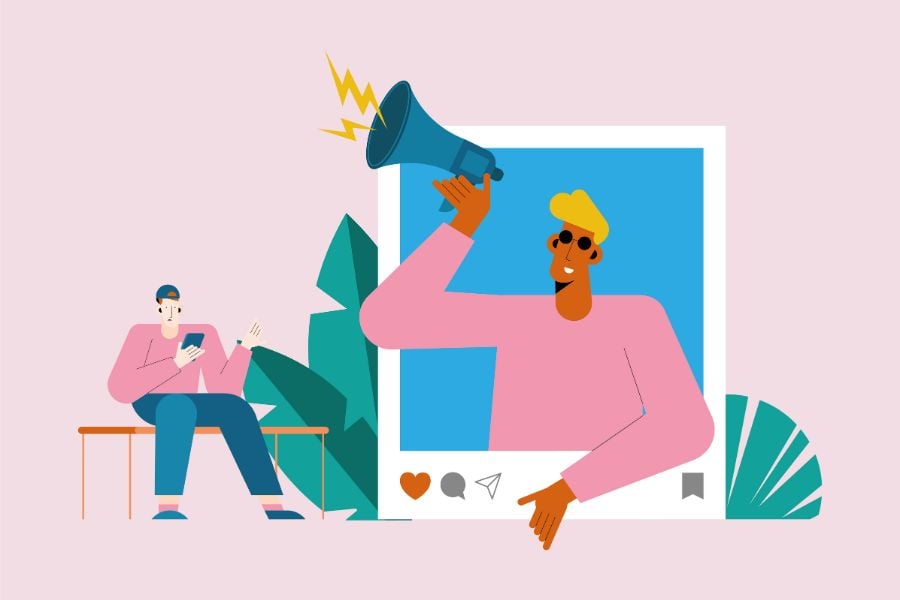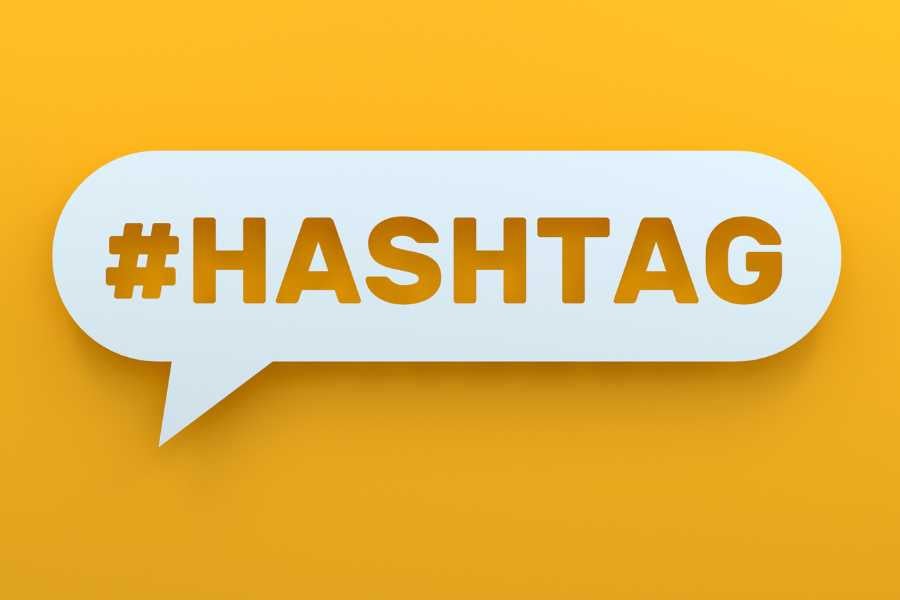Unsure about social media engagement? You’re not alone.
The digital landscape is vast, but navigating it can be much simpler than you think.
Imagine effectively engaging with your audience, like enjoying a friendly chat over coffee. Sound appealing?
With targeted strategies and actionable tips, we can help transform your social media interactions from mundane to meaningful.
Let’s begin!

Understanding the Essence of Social Media Engagement
Imagine inviting guests to a party but not mingling with them; disappointing, right? That’s what social media without engagement feels like.
To put it simply, social media engagement is the measure of interaction your content receives on various platforms. It can take many forms — likes, shares, comments, retweets, mentions, or even clicks on a link.
You wouldn’t ignore a guest at your party, would you?
Similarly, engaging with your social media followers allows you to foster a genuine relationship with your audience.
The Significance of Social Media Engagement

Think of social media engagement as the heart of your social media strategy. It pumps life into your social media presence.
But why is it so vital?
First, it helps build brand awareness and loyalty.
When you actively engage with your followers, you create an emotional connection with them. This connection is what makes your brand memorable and sets you apart in the crowded social media landscape.
Second, social media engagement can provide valuable insights about your audience.
The more you interact with your followers, the better you understand their needs, preferences, and pain points. You can then tailor your content to meet these needs, boosting your overall social media success.
Finally, platforms like Instagram and Facebook have algorithms that reward engagement.
When a post receives significant engagement, the algorithm interprets it as quality content, promoting it to a larger audience.
Therefore, improving social media engagement can help broaden your social reach.
Deciphering Your Social Media Engagement Rate
Measurement is the key to improvement, and social media engagement is no exception.
Your social media engagement rate is the ratio of engagements (likes, shares, comments, etc.) to the number of followers (or impressions) you have.
This metric gives you a quantifiable measure of how well your content resonates with your audience.
But how do you calculate it?
For instance, if a post receives 100 likes and you have 1000 followers, your engagement rate for that post is 10%.
Simple, right?
10 Top Tips That’ll Skyrocket Social Media Engagement

Engagement doesn’t happen by accident. It’s the result of a carefully crafted social media engagement strategy.
Here are some tried-and-true tips…
1. Offer Value Through Quality Content
Providing value to your audience is the bedrock of effective social media engagement. You must consistently create content that appeals to their interests, answers their queries, and adds value to their lives.
For example, if you run a fitness brand, you might post-workout routines, nutrition tips, and success stories from your customers.
The key is to understand what your audience finds valuable and tailor your content accordingly.
Keep in mind that value can take various forms — educational, informational, entertaining, or inspirational.
It’s also beneficial to diversify the format of your content.
You could experiment with video content, infographics, or even memes.
2. Post Regularly and Consistently
Posting regularly keeps your brand at the forefront of your followers’ minds, increasing the likelihood of engagement. Consistency is just as important; if you’re sporadic in your posting schedule, your audience may lose interest or forget about your brand altogether.
For example, if you decide to post twice a day, stick to this schedule.
Timing is also crucial — you want your content to go live when your audience is most likely to be online.
If your audience primarily consists of working professionals, early morning or late evening might be ideal times.
On the other hand, if your followers are students, mid-afternoon or late-night posts may get more traction.
Remember, consistency extends beyond timing.
Ensure that your content is also consistent in terms of quality, tone, and style. This helps maintain your brand image and keeps your audience familiar with what they can expect from you.
3. Engage with Your Followers
Social media is not a one-way street; it’s an interactive platform where conversations happen. This is why it’s crucial to engage directly with your followers.
When a follower leaves a comment on your post, make it a point to respond — whether it’s a simple thank you or answering a query.
Engagement is more than just responses, though.
Try to start discussions, ask questions, and encourage your followers to participate.
For example, you could ask for their opinions on a relevant topic or their experiences with your product. Even using something as simple as Instagram’s poll feature on your stories can lead to increased interaction.
It’s also beneficial to proactively engage with your followers’ content. Liking, commenting, and sharing their posts can show them that you value their contributions and help to build a stronger connection.
Remember, genuine interaction can humanize your brand, foster trust, and in turn, enhance loyalty among your audience.
4. Utilize User-Generated Content
User-generated content (UGC) is like a precious goldmine, rich with potential engagement. It not only validates your brand through social proof, but it also fosters a deeper sense of connection with your audience.
This is because UGC recognizes and celebrates your followers, showcasing their stories, opinions, or experiences related to your brand.
For instance, consider the ‘Shot on iPhone’ campaign by Apple.
The tech giant invites its users to share photos captured on their iPhones. The chosen images then feature in Apple’s marketing campaigns, effectively turning everyday users into brand ambassadors.
To make the most of UGC, encourage your followers to create and share content related to your brand, such as unboxing videos, reviews, or creative uses of your product.
You can also run a UGC campaign with a specific hashtag, making it easier to track and share entries.
The added benefit?
UGC not only boosts engagement but can also provide you with fresh, authentic content for your social media platforms.
5. Collaborate with Influencers

Influencer marketing, when done right, can be a game changer for your brand. This is because influencers have already built a level of trust and rapport with their followers.
When they endorse or promote your brand, it’s like receiving a stamp of approval that can enhance your credibility, reach new audiences, and drive engagement.
For effective influencer collaborations, do your research.
Find influencers whose values align with your brand and whose followers match your target audience. Keep the collaboration genuine and organic — a forced partnership is easy to spot and can be off-putting.
Also, consider providing influencers with a unique promo code or special offer for their followers. This can incentivize engagement and track the impact of your influencer partnerships.
6. Host Giveaways or Contests
Hosting giveaways or contests can be the spark that ignites your audience’s engagement. It’s an exciting way to get your followers involved, encourage them to share your content, and grow your social media presence.
An example of a successful contest is Starbucks‘ annual #RedCupContest.
The coffee giant invites its customers to submit creative photos featuring their holiday-themed red cups. The winning entries receive Starbucks gift cards. This simple yet effective contest stirs up excitement each year, driving significant engagement across social media platforms.
When hosting a contest or giveaway, ensure the rules are clear and the prize is appealing.
A popular format is to ask participants to follow your account, like the contest post, and tag friends in the comments. This increases the visibility of your post, thereby widening your reach.
Remember to use a unique hashtag for the contest, making it easier for you to track entries and for others to follow along. Also, showcase the winner and the prize on your social media platforms to close out the contest and maintain excitement for future ones.
7. Use Attention-Grabbing Visuals
The human brain processes visual information much faster than text. That’s why visuals are a powerful way to boost your social media engagement.
But just posting any image won’t cut it. Your visuals need to be relevant, interesting, and in tune with your brand’s aesthetics.
Consider the example of National Geographic’s Instagram account.
They leverage stunning nature and wildlife photography that not only aligns with their brand but also evokes strong emotions, thus increasing likes, shares, and comments.
Also, infographics can be used to simplify complex data while making it shareable.
A well-designed infographic can drive engagement as it provides value to the viewer in an easily digestible format.
Try platforms like Canva or Piktochart to create striking visuals even if you’re not a professional designer.
8. Leverage Hashtags

Hashtags can be a boon for your social media engagement, but only if used strategically. When choosing hashtags, think about relevancy and popularity.
Use popular hashtags relevant to your content to increase visibility, but also include niche-specific hashtags to target a more focused audience.
For example, if you are a fitness brand, using a generic hashtag like #fitness might get you lost in the sea of posts. But, using more specific ones like #FitnessGoals2023 or #HealthyLivingTips can connect you with a more engaged audience.
Another good strategy is to create a unique branded hashtag.
Coca Cola’s #ShareACoke campaign is a stellar example of this.
The branded hashtag not only increased their content’s visibility but also spurred user-generated content, thus amplifying engagement.
9. Utilize Social Media Engagement Tools
Leveraging the right tools can make your social media engagement efforts more efficient and effective.
Tools like Sprout Social, Hootsuite, and Buffer can help you manage multiple social media accounts, schedule posts, monitor engagements, and analyze performance.
For instance, using Hootsuite’s scheduling feature, you can ensure your posts go live during your audience’s peak online hours, thereby increasing the chances of engagement.
Buffer’s analytics can provide insights into which types of content resonate most with your audience, helping you fine-tune your content strategy.
Remember, these tools can save you time and effort, but they are not a replacement for authentic, human interaction on social media.
10. Analyze and Adjust Your Strategy
The beauty of social media engagement is that it’s not set in stone. Regularly reviewing your metrics and tweaking your strategy based on the results can help you continually improve.
If you notice that your posts with quotes get more likes and shares, consider posting more of this type of content. If your follower engagement peaks at a particular time, adjust your posting schedule to coincide with it.
A/B testing can also be beneficial. Try posting the same content at different times, or use different captions for the same post, and see what garners more engagement.
Don’t forget, patience is key.
Social media success doesn’t happen overnight.
Keep trying different tactics, learn from your mistakes, and stay true to your brand’s voice and message.
This will not only increase your engagement rates but will also foster a loyal and engaged follower base.
Ready to Master the Art of Social Media Engagement?

Feeling overwhelmed? Like you’ve been thrown into the deep end of the social media pool?
We get it. It’s a lot to process, but remember, every expert was once a beginner.
You’ve equipped yourself with powerful tools to transform your social media presence.
Let that feeling of accomplishment wash over you.
Harness this energy, keep learning, keep engaging, and before you know it, you’ll be leading the conversation online.
The post Social Media Engagement: What, Why, & How to Use it (+ Tips) appeared first on Smart Blogger.

No comments:
Post a Comment